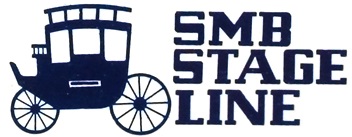Country
Crash of a Convair CV-640 in Kafountine: 31 killed
Date & Time:
Feb 9, 1992 at 0515 LT
Registration:
N862FW
Survivors:
Yes
Schedule:
Dakar - Cap Skirring
MSN:
9
YOM:
1966
Crew on board:
6
Crew fatalities:
Pax on board:
53
Pax fatalities:
Other fatalities:
Total fatalities:
31
Circumstances:
The aircraft was completing a charter flight from Dakar to Cap Skirring on behalf of the Club Mediterranée, carrying 53 tourists from France, Belgium and Switzerland and six crew members. By night, the crew started the descent prematurely when the aircraft struck trees and crashed in a swampy area located south of Kafountine, about 52 km north of Cap Skirring Airport runway 14. The aircraft was destroyed and 31 occupants were killed, among them all six crew members. At the time of the accident, weather conditions were good. Built in 1952, the aircraft was owned by a Gambian company near bankrupt and insurance bills have not been paid. Among the crew were one Russian stewardess, an American captain aged 67 and a Norwegian copilot aged 31. The were not familiar with the region and the aircraft was not maintain according to published procedures as at least 16 instruments were out of order at the time of the accident, among them one altimeter. The aircraft was operated illegally under the registration of its ex operator as the Gambian owner company failed to proceed to the official deregistration / re-registration of the aircraft. Thus the aircraft was not compliant with regulations in force.
Probable cause:
By night, the crew mistook the blue lights of an hotel for the approach lights of Cap Skirring Airport and initiated the approach and landing when the aircraft crashed 52 km north of the intended destination. The following contributing factors were reported:
- Poor flight planning,
- Poor planned approach,
- Poor crew coordination,
- The crew was not familiar with the area,
- Poor general state of the aircraft.
- Poor flight planning,
- Poor planned approach,
- Poor crew coordination,
- The crew was not familiar with the area,
- Poor general state of the aircraft.
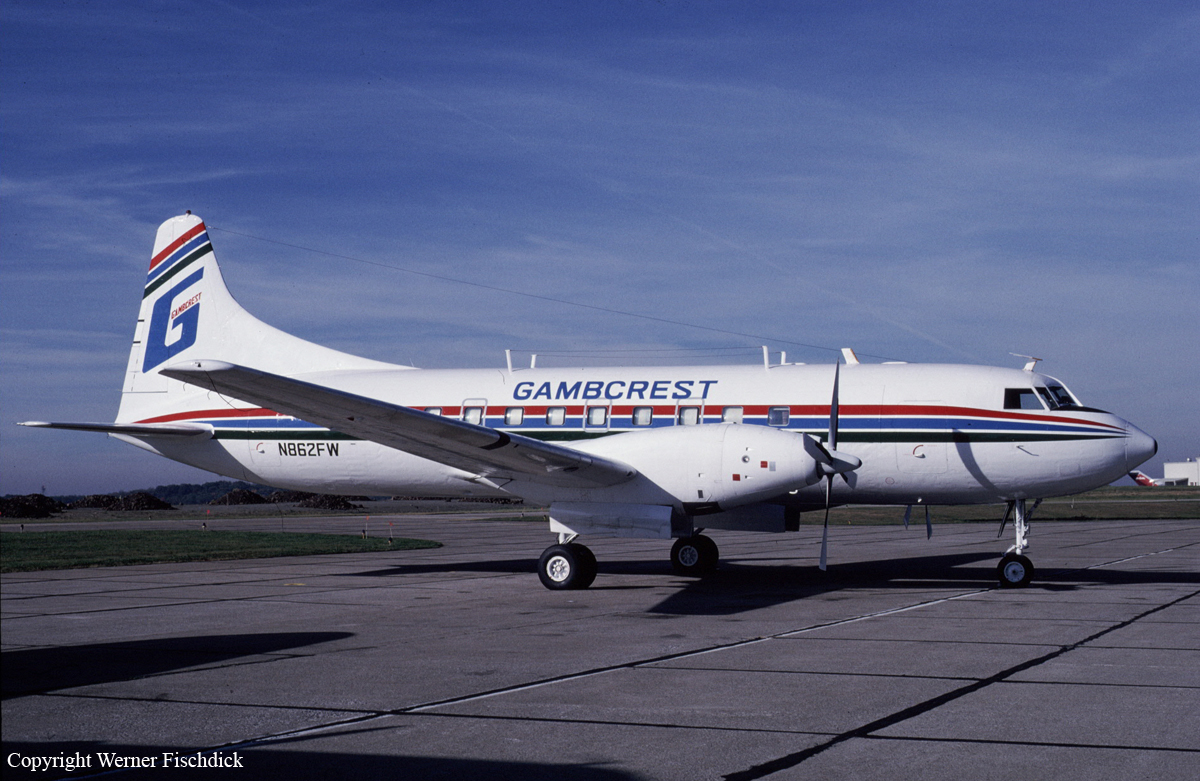
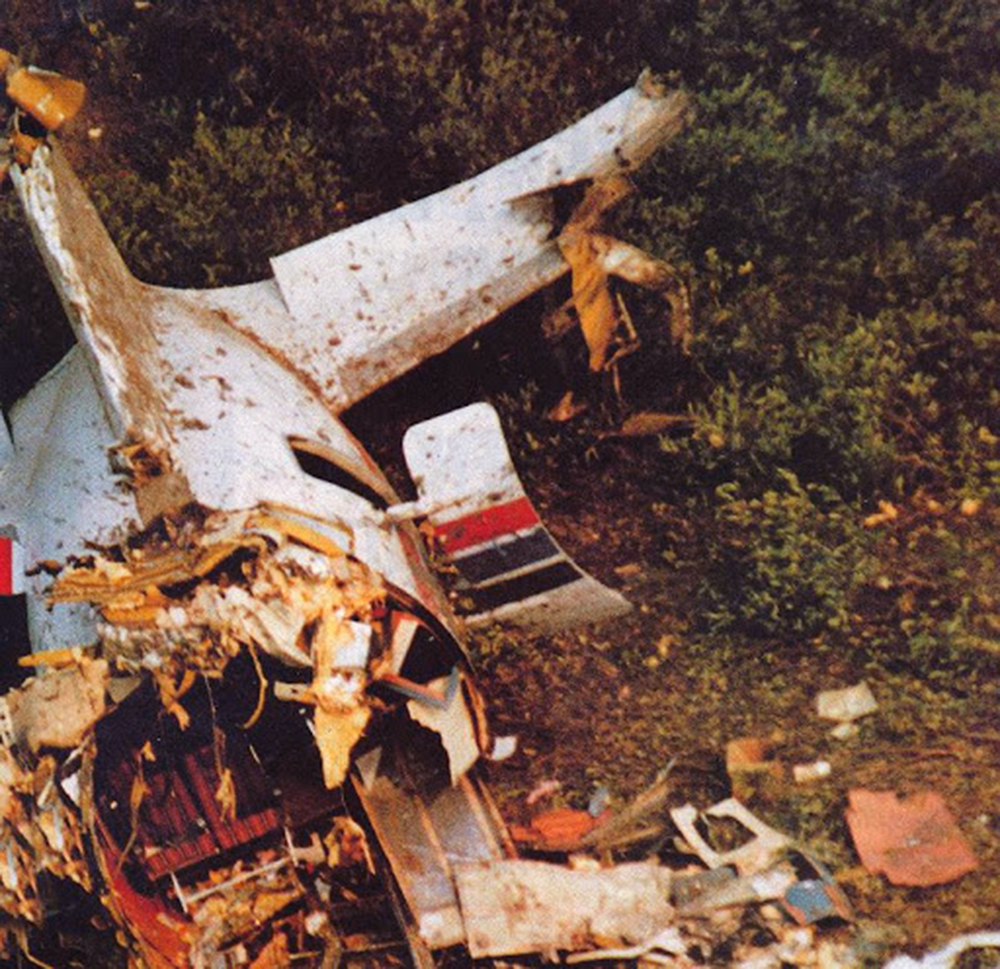
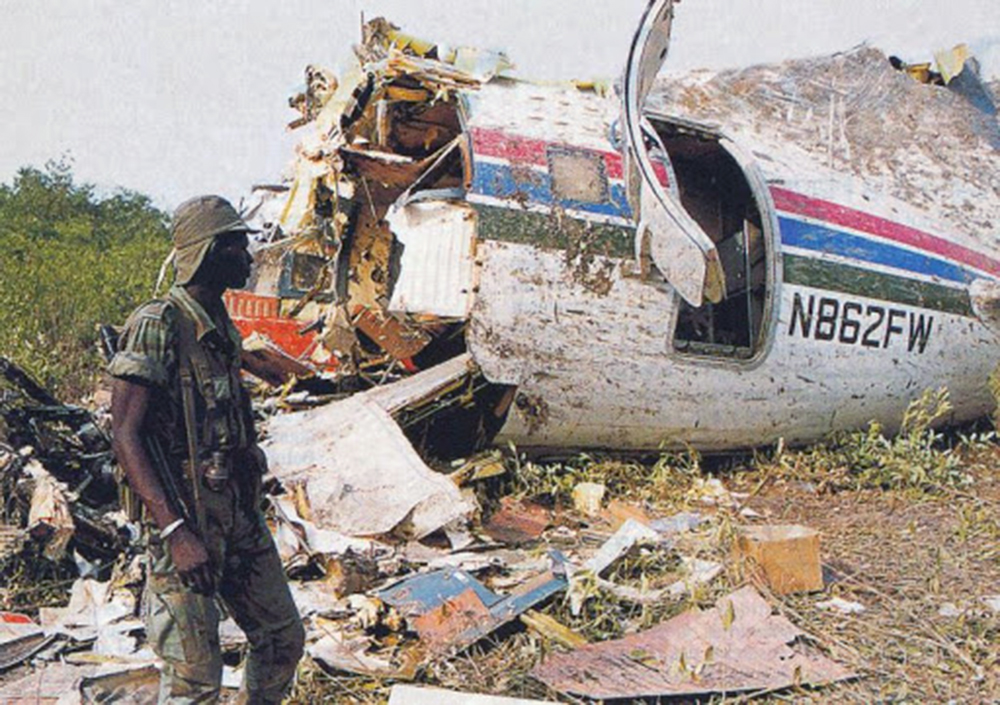
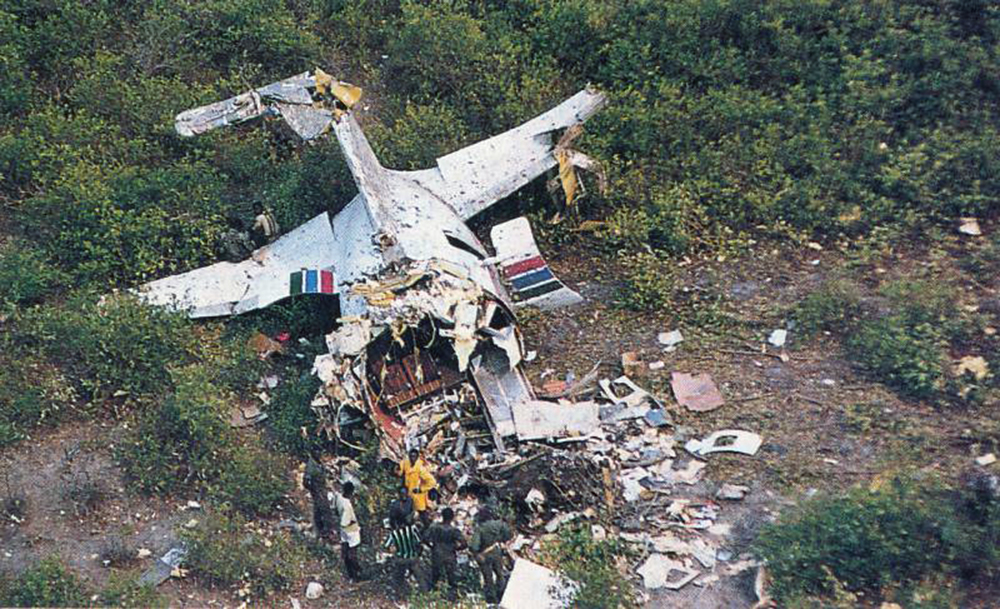
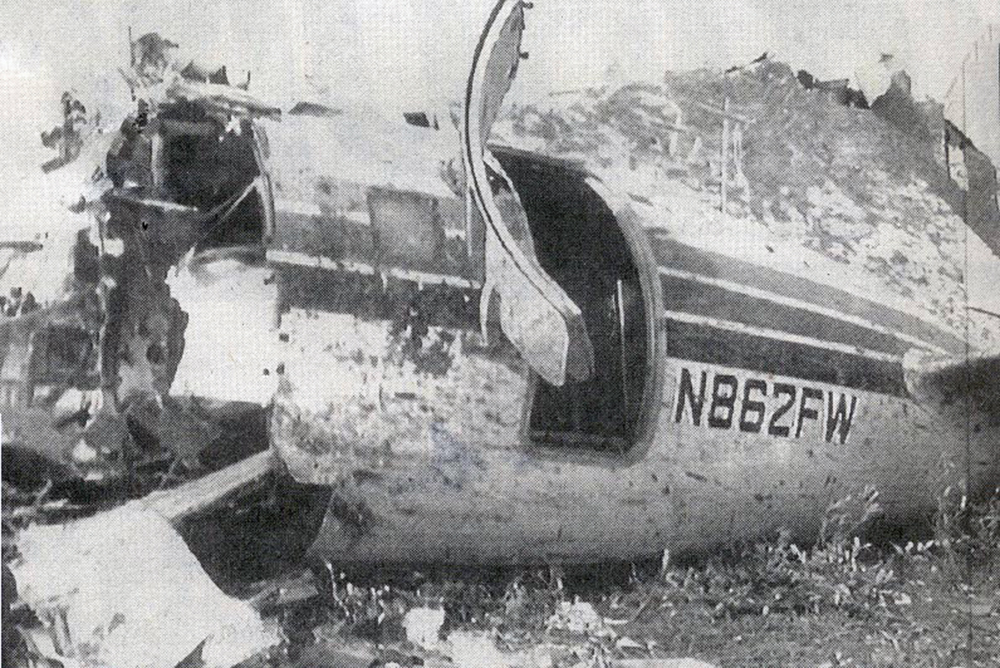

Crash of a Convair CV-640 in Bartlesville
Date & Time:
Oct 28, 1987 at 0734 LT
Registration:
N3411
Survivors:
Yes
Schedule:
Chicago - Oklahoma City
MSN:
31
YOM:
1966
Crew on board:
2
Crew fatalities:
Pax on board:
0
Pax fatalities:
Other fatalities:
Total fatalities:
0
Captain / Total hours on type:
2480.00
Aircraft flight hours:
44764
Circumstances:
The captain was cross-feeding both engines from the right tank while the first officer (f/o) was flying, without informing the f/o. The captain then left the cockpit while cross-feeding. Both tank valves and the right boost pump were on. The right tank ran dry, the right engine failed, and the prop autofeathered while the captain was absent. The captain returned, turned on the left boost pump, but left the right boost pump and the valves open, and attempted to restart the right engine. The left engine then failed but this was not recognized by the crew. The electrical system failed due to the attempted restarts and the fact that nonessential equipment was not turned off. The captain did not apply sufficient pull to the emergency gear handle to lower the gear manually. The aircraft was landed on a short wet sod runway, with the gear and flaps up, at a high rate of speed. The aircraft ran off the end of the runway, through a ditch, across a road, and into trees. Both pilots escaped uninjured.
Probable cause:
Occurrence #1: loss of engine power (total) - nonmechanical
Phase of operation: cruise - normal
Findings
1. (c) 1 engine
2. Fluid, fuel - starvation
3. (c) fuel tank selector position - inattentive - pilot in command
4. (c) crew/group coordination - improper - pilot in command
5. (f) in-flight planning/decision - improper - pilot in command
----------
Occurrence #2: loss of engine power (total) - nonmechanical
Phase of operation: cruise - normal
Findings
6. (c) all engines
7. (c) fluid, fuel - starvation
8. (c) emergency procedure - improper - pilot in command
9. (f) checklist - inadequate - company/operator management
----------
Occurrence #3: forced landing
Phase of operation: descent - emergency
Findings
10. Airspeed - excessive - copilot/second pilot
----------
Occurrence #4: gear not extended
Phase of operation: landing
Findings
11. (c) gear extension - improper use of - pilot in command
12. (f) electrical system - deteriorated
----------
Occurrence #5: on ground/water collision with object
Phase of operation: landing
Findings
13. (f) terrain condition - ditch
Phase of operation: cruise - normal
Findings
1. (c) 1 engine
2. Fluid, fuel - starvation
3. (c) fuel tank selector position - inattentive - pilot in command
4. (c) crew/group coordination - improper - pilot in command
5. (f) in-flight planning/decision - improper - pilot in command
----------
Occurrence #2: loss of engine power (total) - nonmechanical
Phase of operation: cruise - normal
Findings
6. (c) all engines
7. (c) fluid, fuel - starvation
8. (c) emergency procedure - improper - pilot in command
9. (f) checklist - inadequate - company/operator management
----------
Occurrence #3: forced landing
Phase of operation: descent - emergency
Findings
10. Airspeed - excessive - copilot/second pilot
----------
Occurrence #4: gear not extended
Phase of operation: landing
Findings
11. (c) gear extension - improper use of - pilot in command
12. (f) electrical system - deteriorated
----------
Occurrence #5: on ground/water collision with object
Phase of operation: landing
Findings
13. (f) terrain condition - ditch
Final Report:
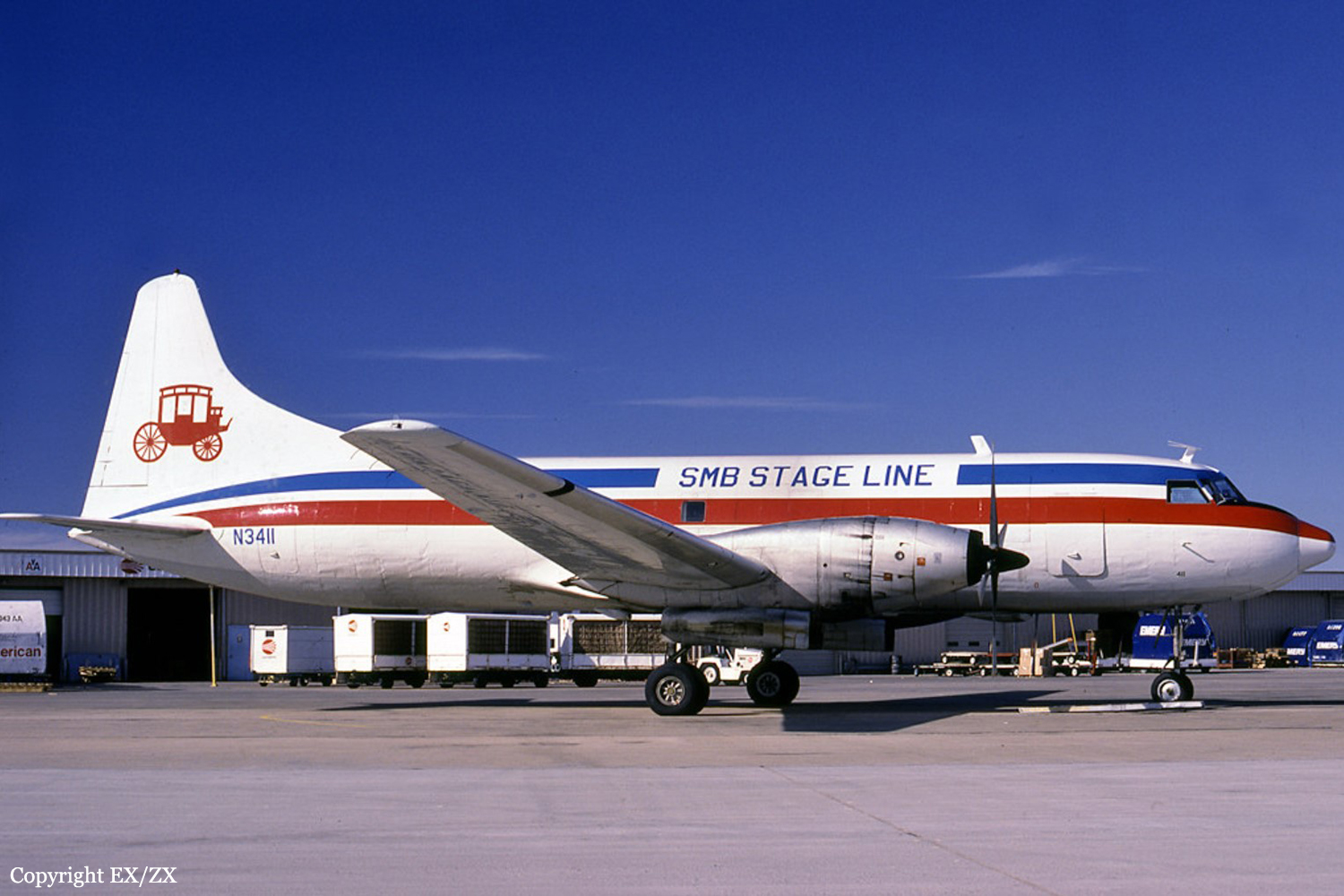
Crash of a Convair CV-640 in Tromsø
Date & Time:
Jul 17, 1973 at 1645 LT
Registration:
HB-IMM
Survivors:
Yes
Schedule:
Zurich - Tromsø
MSN:
412
YOM:
1957
Flight number:
VS598
Crew on board:
4
Crew fatalities:
Pax on board:
56
Pax fatalities:
Other fatalities:
Total fatalities:
0
Captain / Total hours on type:
2100.00
Copilot / Total hours on type:
684
Aircraft flight hours:
29827
Aircraft flight cycles:
26426
Circumstances:
Following an uneventful charter flight from Zurich, the crew started the approach to runway 19 in excellent weather conditions. Following a wrong approach configuration, the aircraft landed nose first. On touchdown, the nose gear collapsed and the airplane slid on its nose for several meters before both mains gears collapsed as well. The airplane slid on its belly for dozen meters, veered off runway to the left and came to rest in a grassy area. All 60 occupants were evacuated safely while the aircraft was damaged beyond repair.
Probable cause:
Wrong approach configuration on part of the captain who failed to follow several points of the approach procedure. The following factors were reported:
- The plane landed in a nose-down attitude, causing the nose gear to touchdown first and to collapse due to excessive g loads,
- The flaps were down at an angle of 40° while the company procedure did not allow more than 33°,
- The approach was completed with a tailwind of 10 knots, the maximum allowable speed,
- The captain failed to react in time and to initiate appropriate corrective actions.
- The plane landed in a nose-down attitude, causing the nose gear to touchdown first and to collapse due to excessive g loads,
- The flaps were down at an angle of 40° while the company procedure did not allow more than 33°,
- The approach was completed with a tailwind of 10 knots, the maximum allowable speed,
- The captain failed to react in time and to initiate appropriate corrective actions.




Crash of a Convair CV-640 in Campbell River: 4 killed
Date & Time:
Sep 17, 1969 at 1709 LT
Registration:
CF-PWR
Survivors:
Yes
Schedule:
Vancouver - Campbell River
MSN:
440
YOM:
1965
Flight number:
PW627
Crew on board:
4
Crew fatalities:
Pax on board:
11
Pax fatalities:
Other fatalities:
Total fatalities:
4
Circumstances:
The Convair approached Campbell River with the weather just above minima (2-2,5 miles visibility, 400 feet broken ceiling and wind 110 degrees with gusts to 20 mph. The crew positioned the aircraft visually 2nm south of the airfield on a westerly heading preparatory to attempting an approach to the west. This would involve a right hand circuit flown above the broken south and west of the airport employing DME and ADF information. This improvised approach was not in accordance with published approach procedures under instrument conditions. After flying for 1 minute and 40 seconds the crew turned right. A few seconds after the captain expressed concern, the Convair struck a 1047 feet hill at 932 feet.
Probable cause:
Wrong approach configuration on part of the flying crew who failed to comply with the approved instrument approach procedure.
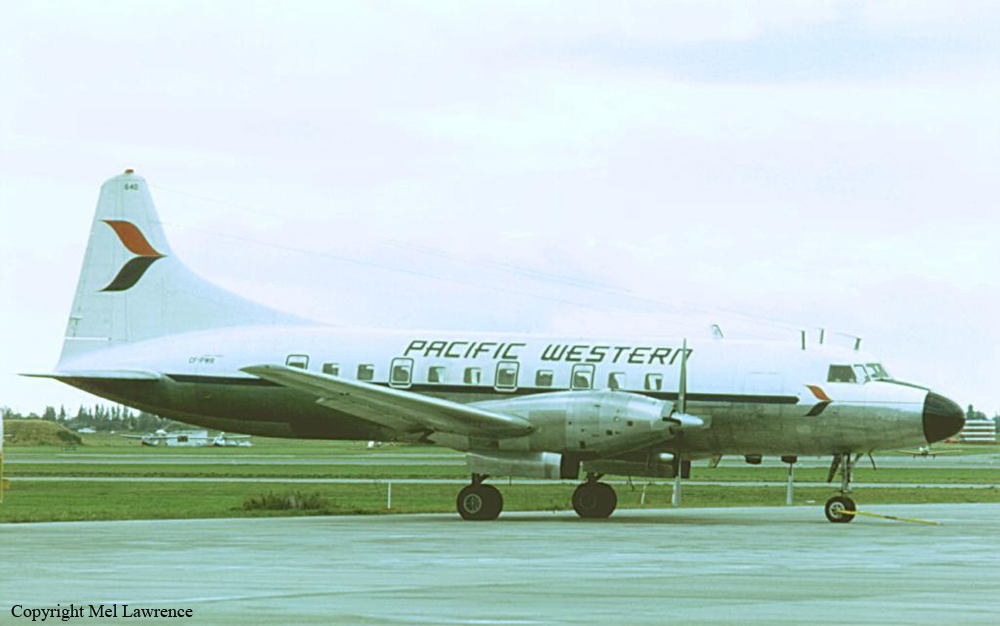
Crash of a Convair CV-640 in San Juan
Date & Time:
Jan 23, 1967 at 0901 LT
Registration:
N3408
Survivors:
Yes
MSN:
21
YOM:
1952
Flight number:
CRB101
Crew on board:
3
Crew fatalities:
Pax on board:
25
Pax fatalities:
Other fatalities:
Total fatalities:
0
Captain / Total hours on type:
670.00
Circumstances:
On final approach to San Juan-Luis Muñoz Marin Airport (Island Grande), the airplane struck the ground 250 feet short of runway threshold. Upon impact, the right wing was torn off and the airplane came to rest. All 28 occupants were evacuated safely while the aircraft was damaged beyond repair.
Probable cause:
The pilot-in-command misjudged distance, speed and altitude on final approach. Last 15 seconds of flight, the crew adopted a rate of descent of 1,600 feet per minute.
Final Report:
